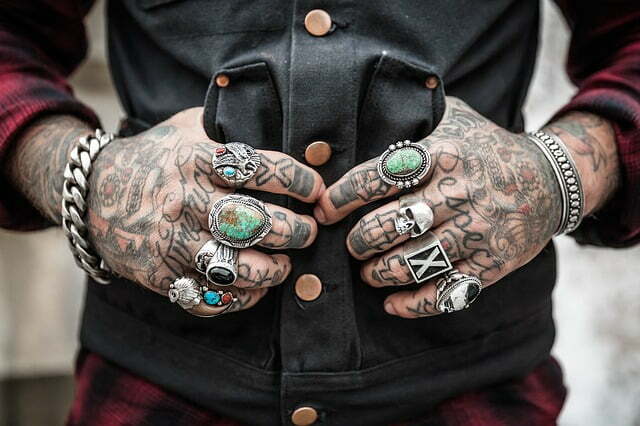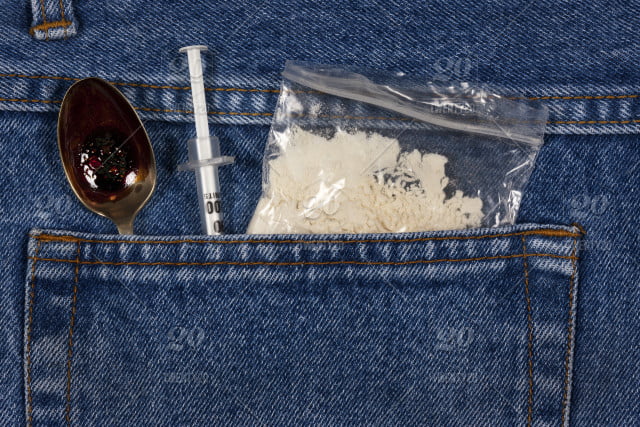A Safeguarding Hub – 23 minute read.
In March this year, 50-year old Brendan McCarthy appeared at Wolverhampton Crown Court where he was sentenced to three years and four months imprisonment. A few weeks earlier he had pleaded guilty to three counts of causing grievous bodily harm against three separate victims. His crimes didn’t involve losing the plot in a drunken brawl, were not driven by a feued or vendetta against others, nor were they gang, drug or domestic related. Instead the charges against McCarthy involved unlawful body modification – tongue-splitting, removing an ear and cutting off a nipple.
McCarthy, a tattooist and cosmetic piercer owned a self-styled business called ‘Dr Evil’s Body Modification Emporium’ in Wolverhampton. His victims were willing customers and the procedures he carried out were all requested and consensual. Nevertheless, permission from his clients did not prevent McCarthy from being convicted of serious assaults.
More and more young people are exploring body art, often following many of their heroes they see on TV and in the media. However, extreme body modification and body art have the potential to pose a risk of harm, particularly to children and young people. So, what are the potential safeguarding issues and what protection does the law offer to those that just might be vulnerable?
Body art is a collective name for a number of procedures on the human body, which include:
- tattoos
- body piercing
- body modification including subdermal implants, scalpelling, scarification/branding
- full body suit – extensive tattooing covering the entire torso
- body painting – temporary henna tattoos
- body mutilation
- risk of infection from insanitary equipment, tattooist and premises. Infections include: hepatitis, HIV, tetanus, septicaemia and sepsis which are potentially fatal.
- adverse reaction and risk of infections from the tattoo itself (it after all it is a wound).
- depression or psychological trauma – if a tattoo is later regretted. Interestingly a 2008 research paper called: ‘Tattoos, body piercings, and self-injury: Is there a connection?’, highlighted that statistically, people with tattoos are more likely to have self-harmed.
- disfigurement – can lead to Keloids, raised areas of scar tissue.
The law on tattooing is covered by the Tattooing of Minors Act 1969. This makes it an offence for anyone to tattoo a person under the age of eighteen, except when the tattoo is performed for medical reasons by a duly qualified medical practitioner or by a person working under his/her direction. The offence is committed by the person who carries out the procedure, rather than the child requesting the tattoo.
In the UK, tattooing is defined as ‘the insertion into the skin of any colouring material designed to leave a permanent mark’.
Any person committing such an offence shall be liable on summary conviction to a fine not exceeding £1000. A person has a defence if they show that at the time the tattoo was performed, he/she had reasonable cause to believe that the person tattooed was of, or over the age of eighteen.
An amendment to the Local Government (Miscellaneous Provisions) Act 1982, provides that all businesses that carry out cosmetic piercing, electrolysis, tattooing and semi-permanent skin-colouring techniques must be registered with the local authority. This does not only apply to tattoo parlours, but also salons and other businesses that carry out body piercing. Once registered it is for individual local authorities to determine what they require from the business e.g. :
- cleanliness of the premises
- cleanliness of the registered person
- cleanliness of any persons assisting the registered persons in the business
- the sterilisation of instruments, materials and equipment used in connection with the business.
A local authority has the power to inspect any premises that carries out piercing or tattooing to ensure that the business owner is complying with the local byelaws.
A tattoo artist must:
- ensure they comply with all health and safety laws
- seek proof of age and make a record of that proof
- cover important health questions
- provide appropriate aftercare advice
A body piercing is a puncture or piercing made into a part of the body by a needle, either for the purpose of jewellery or some other implant e.g. plugs and tunnels. Body parts commonly pierced are:
- ears
- naval
- nose
- lip
- tongue
- eyebrow
- cheek
- nipple
- genitalia
- risk of infection from insanitary equipment, tattooist and premises. Infections include: hepatitis, HIV, tetanus, septicaemia and sepsis which is potentially fatal.
- adverse reaction, swelling and pain.
- bleeding.
Unlike tattooing, there is no legal age restriction for piercing in England and Wales. In Scotland children under 16 are required to have a parent’s permission before they can have their ears or any other body part pierced.
The rules around business and piercing are identical to tattooing. The Local Government (Miscellaneous Provisions) Act 1982, provides that all businesses that carry out cosmetic piercing, electrolysis, tattooing and semi-permanent skin-colouring techniques must be registered with the local authority. This does not only apply to tattoo parlours, but also salons and other businesses that carry out body piercing. Once registered it is for individual local authorities to determine what they require from the business and this can be a requirement to refuse to carry out procedures on anyone under a certain age. Some business also self-regulate and will not carry our procedures on anyone under 16.
A local authority has the power to inspect any premises that carries out piercing or tattooing to ensure that the business owner is complying with the local byelaws. Some authorities carry a list of approved piercers so if you work with a young person who is intent on getting a piercing, you might want to push them in the right direction of a reputable licensed piercer.
Potential offences: In England and Wales, the Sexual Offences Act 2003 (SOA) created a number of offences relating to children. The Sexual Offences (Scotland) Act 2009 created similar offences in Scotland. There has been some debate as to whether genital piercing on anyone under the age of 16, and also nipple piercings on girls under 16, amounts to sexual assault. Some websites that cover body piercings state that genital piercings on anyone under the age of 16 years is a sexual assault. However, this is where the law becomes a little murky. Here is our interpretation.
Section 3 of the SOA states that “a person (A) commits an offence of sexual assault if he:
- intentionally touches another person (B)
- the touching is sexual
- (B) does not consent to the touching, and
- A does not reasonably believe that B consents
Section 7 of the act is the offence of Sexual Assault of a child under 13 which is identical to s3 but provides that a child under 13 years cannot give consent.
For there to be an offence under these sections the touching, penetration or other activity needs to be ‘sexual’ and this is a key factor in determining whether those carrying out the piercing commit a ‘sexual’ offence. Section 78 of the act defines ‘sexual’ as:
“penetration, touching or any other activity is sexual if a reasonable person would consider that —
(a) whatever its circumstances or any person’s purpose in relation to it, it is because of its nature sexual, or
(b) because of its nature it may be sexual and because of its circumstances or the purpose of any person in relation to it (or both) it is sexual.
So, what this means is that genital or nipple piercing will only amount to being sexual, dependent on how a “reasonable person” views the procedure. Morally a “reasonable person” person might not like the idea of a 15 -year old girl entering a salon and asking for her genitalia to be pierced, but it is unlikely that they would see this as being sexual. What about those children under 13 years who are offered more protection. Well the same principle applies and the “reasonable person” does not consider the touching as sexual, then a child under 13 could give consent for the procedure (see below). Essentially non-sexual touching of a person of any age is not an offence under the 2003 act.
Consent by young people – the issue around consent for children and young people can be a complex area. Most safeguarding professionals will have an awareness of the case of Gillick v West Norfolk and Wisbech Area Health Authority (1985) and the judgement by Lord Fraser that later followed, which became known as the Fraser Competencies (or guidelines). Gillick and Fraser is an article in its own right and we don’t want to get too hung up on it, in this piece. However, suffice to say that the Lords acknowledged that a child becomes increasingly independent as he/she grows older and therefore parental responsibility and the rights of a parent lessens correspondingly. Therefore, a child who has reached sufficient maturity (intelligence) and understanding, will be seen as being capable of making their own decisions. This obviously depends on the nature of the consent required, but it therefore follows that if a person carrying out a piercing procedure is satisfied that the child is “capable of making a reasonable assessment of the advantages and disadvantages of the treatment (read for this procedure) proposed”, then they can take the child’s consent as “true consent”. Clearly the younger the child, the more difficult it will be for them to have reached that threshold for maturity and understanding.
Any type of body piercing without the consent of the recipient would amount to an assault. However, in the case of Brendan McCarthy we know that even where there was consent, a person can still be convicted of an assault (see extreme body modification below).
The World Health Organisation (WHO) defines FGM in four types. Type 4 is seen as the less serious type of FGM and “includes all other harmful procedures to the female genitalia for non-medical purposes, e.g. pricking, piercing, incising, scraping and cauterizing the genital area”.
In 2015 the NHS introduced new guidelines whereby if and when they identified women who had genital piercings, they would record these women as having suffered FGM, even where there had been explicit consent given. This included women who had willingly gone through and paid for the procedure. Whether this policy has since changed is a little unclear, but the current NHS factsheet on female genital piercings, makes no record of FGM whatsoever, although it is an aftercare sheet so they may well be trying to avoid scaring people away from seeking medical help if they need it.
Regardless of the views of the NHS or any other organisation, the law is clear on FGM:
A person is guilty of an offence if he excises, infibulates or otherwise mutilates the whole or any part of a girl’s labia majora, labia minora or clitoris.
No offence is committed by an approved person who performs—(a) a surgical operation on a girl which is necessary for her physical or mental health, or (b) a surgical operation on a girl who is in any stage of labour, or has just given birth, for purposes connected with the labour or birth.
Clearly, those that carry out genital piercings with the consent of their customers, are not covered by the above defence. They are not approved people and the procedure is not being done as a medical procedure. The Government have previously made it known that they are not considering an amendment to the act to exempt cosmetic surgery.
However, much like our article on labia stretching, the dictionary definitions of the key words of the FGM act do not appear to cover genital piercings. They are:
- excise – to remove something, especially by cutting
- infibulation – the practice of excising the clitoris and labia of a girl or woman and stitching together the edges of the vulva to prevent sexual intercourse
- mutilate - inflict a violent and disfiguring injury
On this basis, many would argue that genital piercings will not fall under the act, but whether this is the case has yet to be tested in the court. With only one successful conviction since the act came into force, this is unlikely to happen anytime soon.
In Scotland the picture is a little clearer, but still up in the air. Last month (April) Scottish Ministers announced that consensual intimate piercings are legal and will not be recorded as FGM. Many Scottish tattoo parlours had stopped providing genital piercing services to consenting women over the age of 18 because of a lack of clarity and a fear of being prosecuted under the Prohibition of FGM (Scotland) Act 2005. However, Police Scotland have confirmed that until the legislation is actually changed, or a legal precedence is set exempting genital piercings, then it could still amount to an offence under the act.
The Collins English Dictionary describes body modification as “any method of permanently adorning the body, including tattooing and piercing”. We prefer the Wikipedia definition: “body modification is the deliberate altering of the human anatomy or human physical appearance”. Types of extreme body modification include:
- subdermal implants (also known as 3-D implant or pocketing) – a silicone implant that is placed underneath the skin creating a raised design. This includes horn implants where silicone is placed under the skin on the forehead, creating horns.
- transdermal implant – an object placed partially below and partially above the skin.
- scalpelling – decorative perforations through the skin usually performed with a scalpel rather than a needle, creating a larger aperture than piercing.
- scarification/branding – cutting, scratching, etching, burning designs and words into the skin (scar tissue). Branding can be enhanced by tattooing the wound.
- tongue splitting – the act of cutting or burning the tongue to give it a snake-like appearance
- ear reshaping - altering the shape of the ear by cropping, pointing or amputating various parts of the ear, often to achieve a non-human appearance e.g. an elf or Vulcan.
- beading (pearling) – inserting beads under the surface of the skin, most popular under the penis (shaft and foreskin) or labia to enhance sexual pleasure.
- corneal tattooing – tattooing the cornea of the human eye.
- shaping e.g. tight lacing of corsets over time.
- amputation – generally fingers.
We need look no further than the case of Brendan McCarthy to identify some of the safeguarding issues:
- he carried out the procedures without using any form of anaesthetic
- in his studio he had out-of-date medical equipment e.g. pre-injection swabs, anaesthetic gel, stitching thread and needles.
- he had no qualifications in surgical procedures and therefore was not equipped to deal with any adverse consequences if they had arisen, a fact acknowledged by the Judge.
- he made no attempt to ascertain from his clients their medical or any psychiatric history.
Other potential issues are:
- risk of infection from insanitary equipment, person carrying out the procedure and premises. Infections include: hepatitis, HIV, tetanus, septicaemia and sepsis which is potentially fatal.
- adverse reaction, swelling and pain.
- permanent disfigurement (often the point of the modification)
- depression or psychological trauma – if later regretted.
A 2015 study by YouGov identified that contrary to popular belief, the overwhelming majority of people with tattoos do not regret them in later life. Based on the study, around 19% of British adults have a tattoo but only 14% of those that had them had any regrets. However, that is still a fair percentage and there are enough companies advertising tattoo removal to suggest that there are sufficient numbers who do regret the procedure. Whilst it is possible to remove tattoos, it is more difficult and often impossible to correct other forms of body modification. Therefore it is likely that if at some stage a modification is regretted, then it could lead to psychological trauma and depression.
In the case of McCarthy, a slightly different scenario unfolded. After he had pleaded guilty, the police approached one of his former customers, the man who had had his ear removed. This person told the police that he felt he had been deceived by McCarthy, that had he known at the time that the procedure was illegal he would never have had the procedure carried out. He also said that he had not been that desperate to have his ear removed in the first place. Some may hold the view that if he consented, he must have known what he was doing, but without having been there at the time, it is not right to sit in judgement. Was this man vulnerable at that period in his life? Did he realise what he was doing and had he thought the whole process and consequences of his actions out? If this was a young person, would they have the maturity and the understanding to realise that this was a mutilation they would have to live with for all their life?
Regret is common. Last month, The Guardian ran a news story about medical services in Papua New Guinea being overwhelmed by the number of men seeking medical treatment, having botched their own attempts at penis enlargements. These do-it-yourself attempts involved men injecting their genitals with several different substances - coconut oil, silicone, baby and cooking oil. These were not just a handful of isolated incidents and the country had seen a substantial rise in cases, involving men from all walks of life. The Guardian spoke to one of the surgeons from a hospital in Port Moresby who said: “The bulk of them have abnormal, lumpy masses growing over the penis and sometimes involving the scrotum. “A good number are coming in with ulcers; they eventually burst open. Some of them have difficulty urinating because the foreskin is so swollen it cannot contract.” The Guardian linked the story to a report last year where our own NHS reported that they were having fix issues caused by DIY penis fillers in the UK.
Extreme body art or modification is not covered by the law per se. Modification outside of piercing and tattoos is not specifically catered for. However, McCarthy’s case demonstrates that a person cannot just mutilate another person, even when there is explicit consent.
McCarthy had in fact been arrested in December 2015 following a complaint to the City of Wolverhampton Council's environmental health team. When he appeared at court, he ran a defence that he had written consent from his clients and therefore the procedures he had carried out were lawful. Unusually his case went to the Court of Appeal before his trial where he argued that the procedures should be regarded as lawful to protect the "personal autonomy" of his customers. However, the Court disagreed with him, citing that it was not in the public interest that a person could wound another for no good reason. They said that McCarthy had performed a number of medical procedures for money, without there being any medical reason to do so. The full text of the judgement is pretty scathing and it is clear that they took a very dim view of the type of body modification he performed. At the point the Lords made their judgement, McCarthy had no defence and therefore entered a guilty plea.
McCarthy was always going to struggle with his consent defence, for there is longstanding case law (stated cases) that has set the legal precedent around how much harm another person can consent to. In effect the law states that assaults without good reason which amounts to actual bodily harm or grievous bodily harm will be unlawful and the consent of the victim is irrelevant. Consent does not mean that a criminal offence hasn’t been committed. However, there are a number of activities/procedures that have been accepted, the most notable examples being boxing, male circumcision and some piercings. It will be the court to decide what is reasonable and they certainly did not see the removal of an ear falling into the reasonable category. Effectively the judgement in the McCarthy case provides that body modification procedures which result in injur, are unlawful. However, what types of the many body modification procedures amount to serious injury, has not yet been tested in the courts. Some, like McCarthy’s crimes are obvious, but there are other types of body modification that might not be considered to amount to ABH or GBH. Both tattooing and piercing would not, but obviously if the latter is female genital piercing then the ambiguity of the FGM act comes into play.
The only thing that is clear, is that some clarity is required.
Resources
There is very little safeguarding information available on the internet around young people exploring body art. However, the best (and possibly the only) resources we have seen have been produced by Sheffield City Council. They have developed an awareness campaign, providing children and young people in Sheffield with impartial information about piercing and tattooing. They have a number of resources on their body modification page.
Thanks for reading.

Get Involved!
Share Your own Safeguarding News and Research to reach a wider Audience
From Our Blog
Extreme Body Modification – the law is clear, well sort of!
What age can a young person get a tattoo or body piercing? What is the law around body modification? What are the safeguarding implications?
Cyberbullying
Understand the impact and risks associated with cyber-bullying, learn how to identify indicators and read tips on prevention.
County lines, the children exploited to deal drugs by criminal networks
Here we look at the ‘phenomenon’ that is County Lines, also know as "Going country" we explore what it really is
Bullying, sexting and sexual exploitation are not the only online dangers!
Cyber bullying and online sexual exploitation are not the only dangers that lurk on the world wide web for children. Here we look at some of the other safeguarding risks that young people may be exposed to.
Related Posts
The Safeguarding Hub
Share Your Safeguarding News And Research To Reach A Wider Audience








